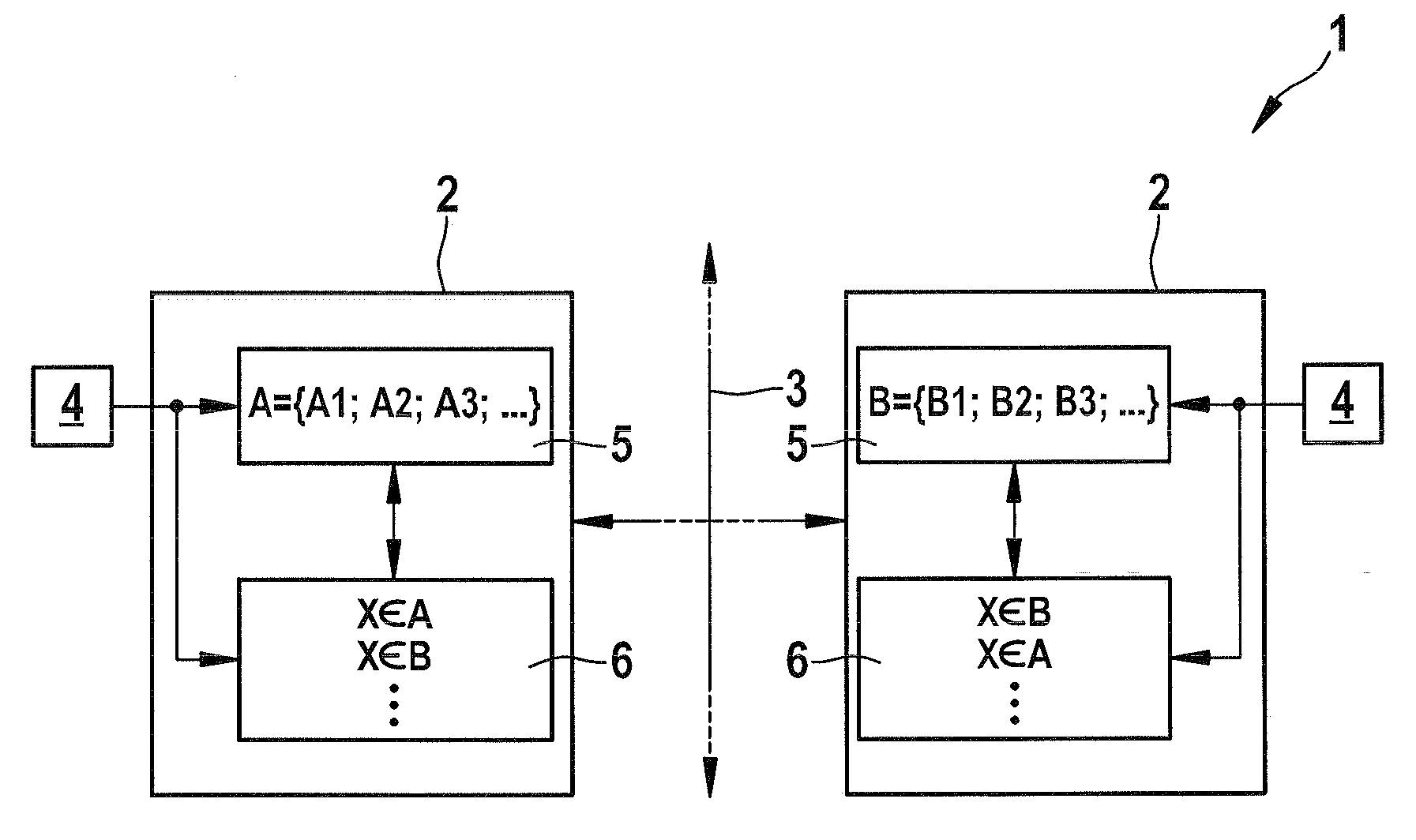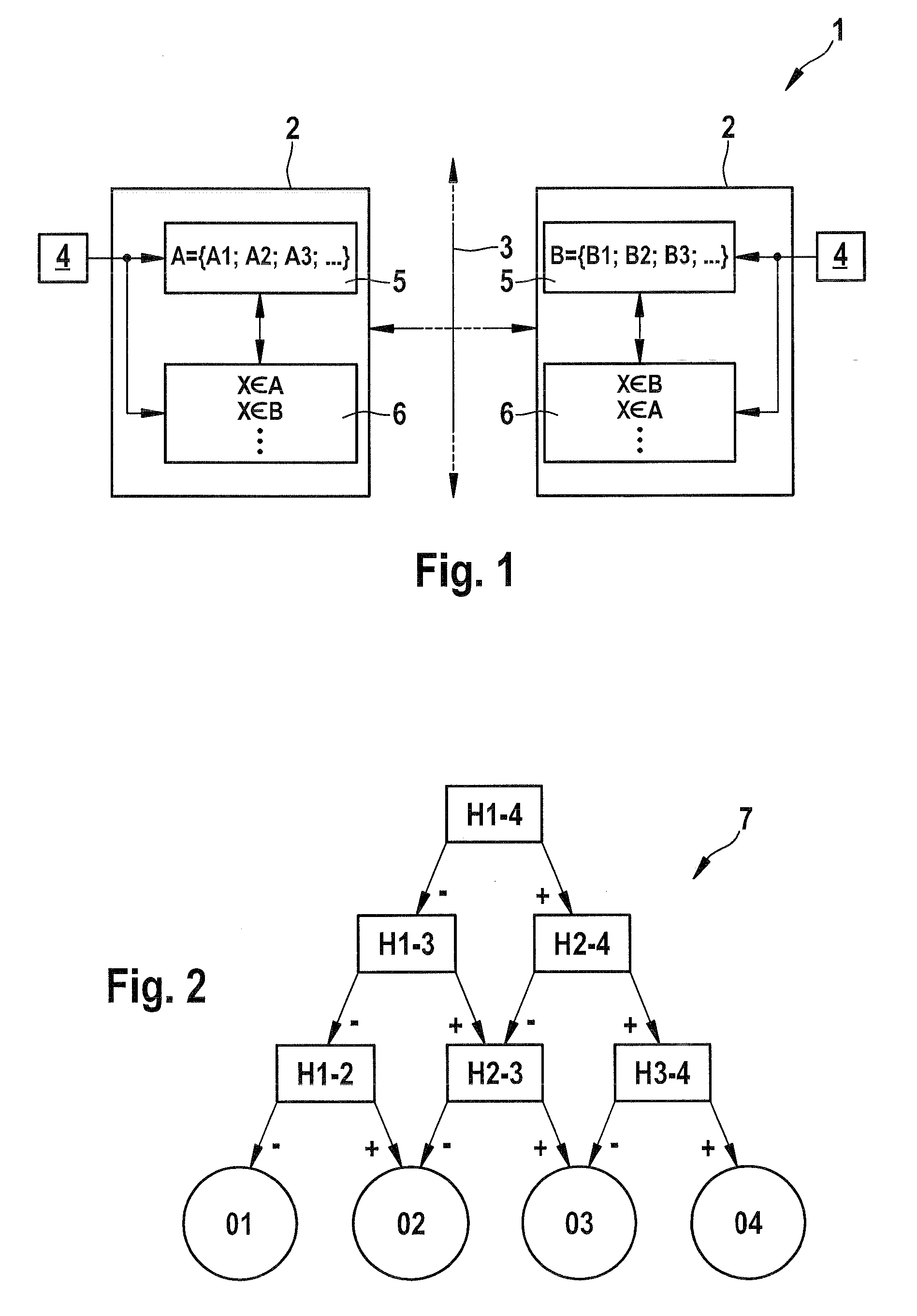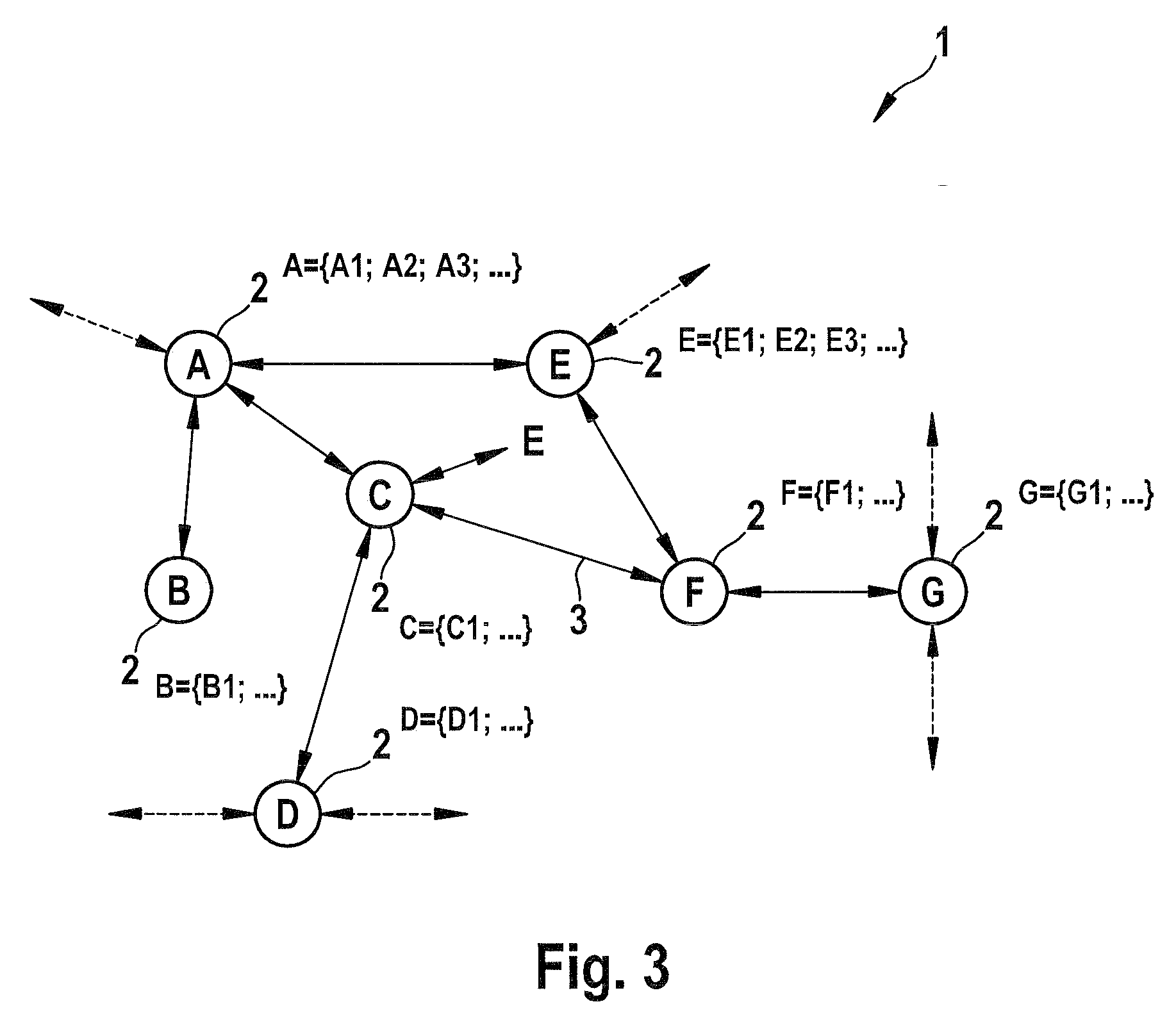Sensor network system, transmission protocol, method for recognizing an object, and a computer program
a technology of a network system and a sensor, applied in the field of sensor network system for tracking moving objects, can solve problems such as challenging the technology of tracking moving objects from one monitored subregion to the next, and achieve the effect of reducing the difficulty of detecting the movement of objects
- Summary
- Abstract
- Description
- Claims
- Application Information
AI Technical Summary
Benefits of technology
Problems solved by technology
Method used
Image
Examples
Embodiment Construction
[0034]FIG. 1 shows a schematic block diagram of a sensor network system 1 which is suited and / or designed to monitor a surveillance region, e.g., a building, a street, or the like. Sensor network system 1 comprises a plurality of network nodes 2 which are connected and / or are connectable such that they communicate with one another via a network 3. Network 3 may have any type of design, and, in particular, is connected via cable or wirelessly, e.g, as a LAN, WLAN, Internet, etc. Sensor network system 1 may include a large number, e.g., more than 50 or 100, network nodes 2.
[0035]Network node 2 is connected to one or more sensors 4; sensors 4 of one of the network nodes 2 are directed to a subregion of the surveillance region assigned to network node 2. Sensor 4 may be designed, e.g., as one or more surveillance cameras, or as a microphone, a weight sensor, a sensor for electromagnetic radiation, etc. Using sensors 4, moving objects such as persons in the assigned subregion are detecte...
PUM
 Login to View More
Login to View More Abstract
Description
Claims
Application Information
 Login to View More
Login to View More - R&D
- Intellectual Property
- Life Sciences
- Materials
- Tech Scout
- Unparalleled Data Quality
- Higher Quality Content
- 60% Fewer Hallucinations
Browse by: Latest US Patents, China's latest patents, Technical Efficacy Thesaurus, Application Domain, Technology Topic, Popular Technical Reports.
© 2025 PatSnap. All rights reserved.Legal|Privacy policy|Modern Slavery Act Transparency Statement|Sitemap|About US| Contact US: help@patsnap.com



